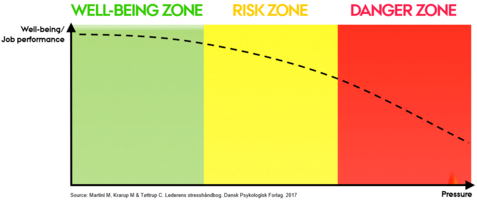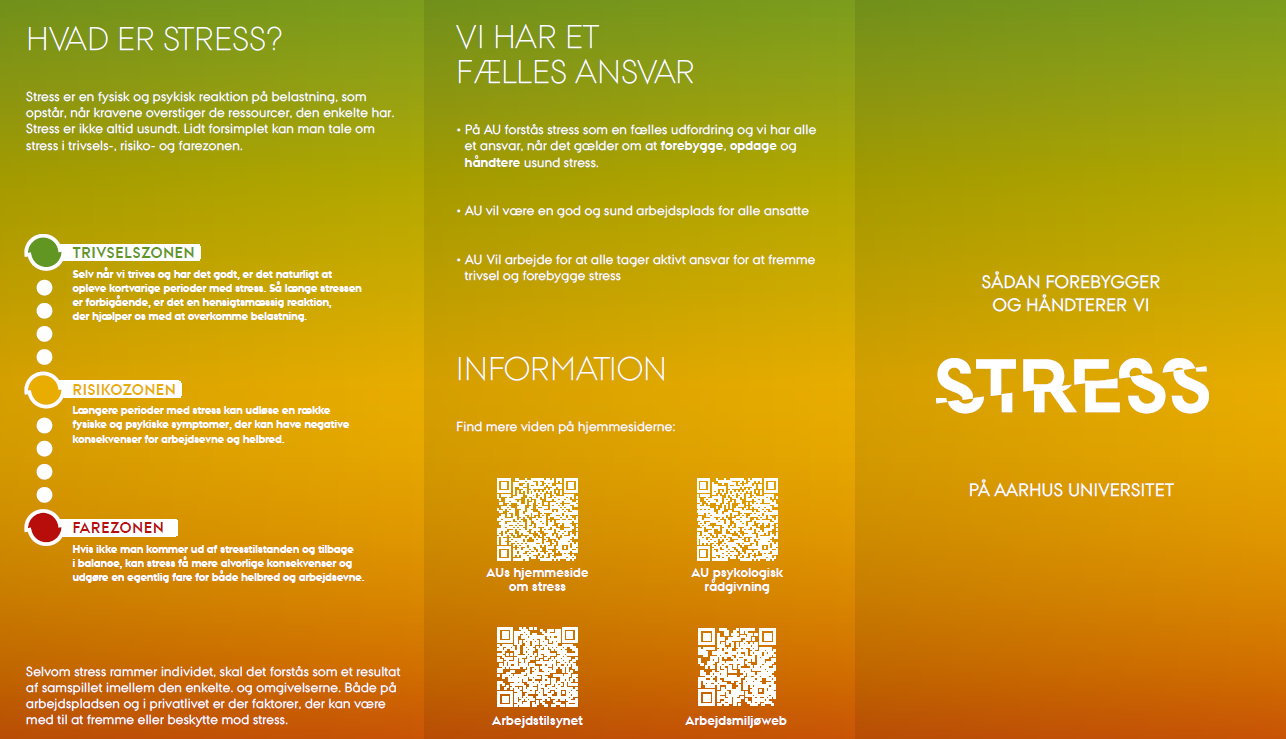Understanding stress
At AU, we want to encourage everyone to take an active responsibility for promoting well-being and preventing stress. In order to succeed in this, we need a common language for talking about and defining stress.
On this page, you can read about the three zones of stress: the well-being zone, the risk zone and the danger zone, and you can learn to identify some of the factors that can contribute to the development of unhealthy stress.
You will also find a chart of typical stress symptoms and a stress test that will give you an indication of where you are on the stress continuum of green, amber and red zones.
Well-being and job performance in the well-being, risk and danger zones
The well-being zone – balance and well-being
Even when we are thriving and feel well, it is natural to experience brief periods of stress. As long as the stress is temporary, it is an appropriate reaction that helps us to deal with pressure.
- You perform your work satisfactorily and you function well in your collaboration with others
- Only mild/temporary symptoms of stress
- Balance between activation and deactivation
The risk zone – longer periods of imbalance
Being stressed over longer periods of time can lead to a variety of physical and psychological symptoms that can affect your health and work performance negatively.
- There is a detrimental impact on the quality of your work
- You no longer function optimally in your collaboration with others
- Persistent stress symptoms that begin to have a negative effect on health and work performance
The danger zone – intense, chronic overload
If you do not regain your balance and your stress becomes chronic, stress can have more serious consequences and constitute a genuine threat to both your health and work performance.
- Your work performance is significantly reduced
- Increasing symptoms and danger of physical and mental health problems
Sources of well-being and stress

The workplace psychology triangle shows that there is an interplay between work, private life and individual factors that influences whether we thrive in our everyday lives or are burdened by stress.
Typical signs/symptoms of stress
Physical
| Psychological
| Behavioural
|
Bo Netterstrøm, 2014
Test your stress
If you have ticked 5 or more boxes in the red column, you should consider making an appointment with your doctor.
The symptoms of long-term stress differ from person to person, and many of the above-mentioned symptoms are not necessarily caused by stress. Source: Danish Health Authority, leaflet on stress, 2007.
If you feel concerned about whether you or a colleague may be suffering from stress, you are advised to speak to your manager, union representative, occupational health and safety representative or a colleague.
Even if you have only ticked a few boxes in the red column, or if you have a lot in the yellow column, you still need to react and try to find out how to make relevant adjustments that will ensure your well-being on a daily basis. Use your network or contact AU’s psychological counselling.

